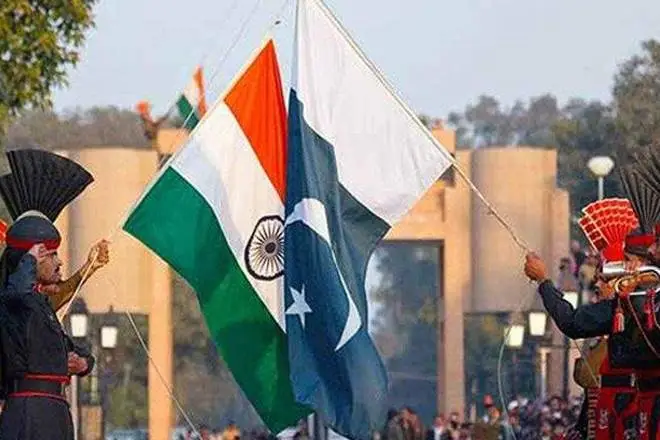In a major development following weeks of bilateral tension and military escalations, India and Pakistan on Saturday finally agreed to a full and immediate ceasefire the Ministry of External Affairs (MEA) confirmed. The ceasefire commenced from 5 pm on May 10, 2025.
Both sides agreed to stop all firing and military action on land and in the air and sea from 5 PM today, May 10. Another round of talks at the DGMO-level will be held on May 12. The announcement which brought relief amid escalating bilateral tension was made by India’s Foreign Secretary Vikram Misri.
“Pakistan’s Director General of Military Operations (DGMO) called Indian DGMO at 15:35 hours earlier this afternoon. It was agreed between them that both sides would stop all firing and military action on land and in the air and sea with effect from 1700 hours Indian Standard Time. Today, instructions have been given on both sides to give effect to this understanding. The Directors General of Military Operations will talk again on the 12th of May at 1200 hours,” Misri stated.
The ceasefire was prompted by a series of military strikes, including India’s Operation Sindoor, which targeted terrorist camps in Pakistan and Pakistan-occupied Kashmir (PoK). Pakistan responded with multiple missile attacks and drones leading to significant casualties on both sides including civilians, especially women and children residing in villages close to the border.
US President Donald Trump announces India-Pakistan ceasefire
“After a long night of talks mediated by the United States, I am pleased to announce that India and Pakistan have agreed to a FULL AND IMMEDIATE CEASEFIRE. Congratulations to both Countries on using Common Sense and Great Intelligence. Thank you for your attention to this matter!” Trump posted on social media.
What is ceasefire?
A ceasefire, according to the United Nations (UN), is a temporary suspension of armed hostilities, regulated by the same general principles as those governing an armistice. In essence, it’s an agreement, whether unilateral or negotiated, to stop all military activity for a defined period and area, not necessarily marking the end of the conflict itself.
Humanitarian law requires that “whenever circumstances permit, an armistice or a suspension of fire shall be arranged, or local arrangements made, to permit the removal, exchange and transport of those who are wounded or sick as a result of combat.”
However, it is to be noted that a ceasefire is not a permanent peace agreement but rather a temporary pause in fighting.
How ceasefire helps nations at war?
The purpose a Ceasefires serves is that it allows both nations at war or war-like situation time for negotiations, it provide civilians with an opportunity to evacuate, it provides time to the countries at war to gather forces and necessary ammunition. Most importantly, it gives time to assess the opponent’s authority and chain of command.
India remains vigilant, suspension of Indus Water Treaty to continue
However, even after announcing ceasefire, the government of India has said that it remains “fully prepared” and “ever-vigilant” and any future escalation by Pakistan will invite a “decisive response”.
Also, the ceasefire with Pakistan is a conditional one and there will be no change in India’s position on the diplomatic measures against the neighbouring country, including the suspension of the Indus Water Treaty, as per sources.


